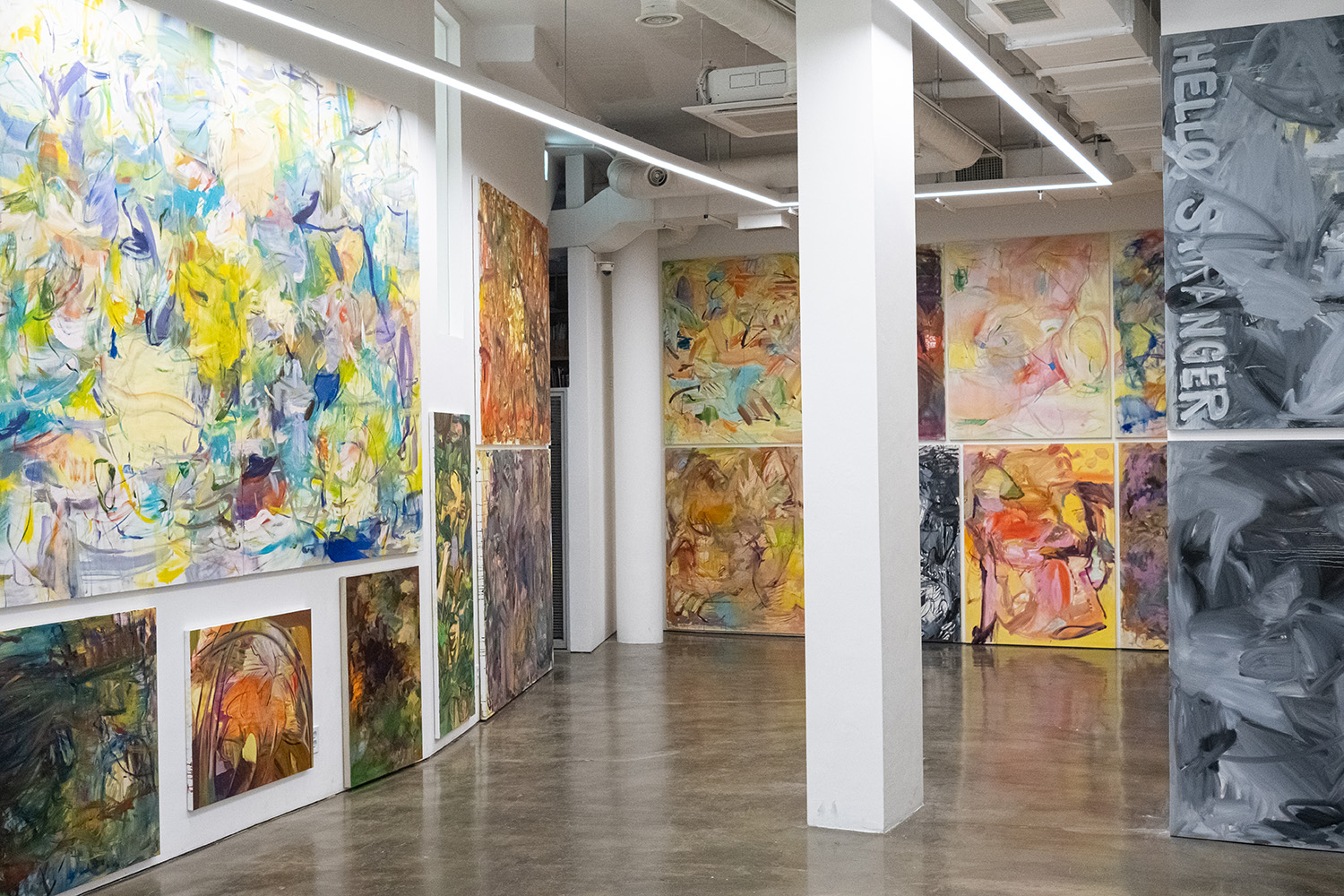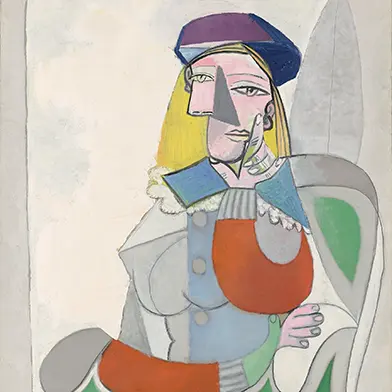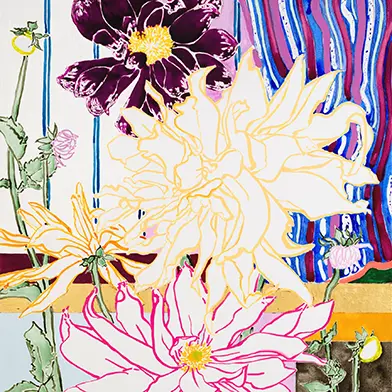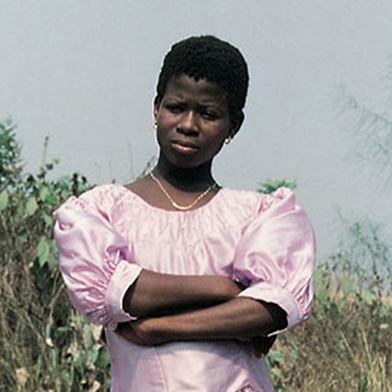Open: Tue-Sun 10.30am-6.30pm
64, Bukchon-ro 5-gil, Jongno-gu, 03054, Seoul, South Korea
Open: Tue-Sun 10.30am-6.30pm
Visit
Ahn Sang-hoon: Hands and Stains
Gallery Chosun, Seoul
Fri 14 Feb 2025 to Sun 27 Apr 2025
64, Bukchon-ro 5-gil, Jongno-gu, 03054 Ahn Sang-hoon: Hands and Stains
Tue-Sun 10.30am-6.30pm
Artist: Ahn Sang Hoon
Gallery Chosun presents the solo exhibition "Hands and Stains" by Ahn Sang-hoon. This exhibition marks Ahn's first solo show at Gallery Chosun since "Practicing Folds with Repetitive Sentences" in 2022, featuring over fifty works including new and previously unseen pieces. Ahn Sang-hoon explores the inherent uncertainties of painting—oscillating between representation and abstraction, chance and inevitability, stimulation and receptivity—as he considers how these elements can expand into various contexts and spaces.
In "Hands and Stains," the exhibition unfolds the still ambiguous temporalities of painting from the vantage point of the artist's physical age of fifty. Starting with images left in an intermediary, provisional state, the paintings traverse a liminal time between dog and wolf, predominantly progressing between 4 and 8 PM. Encountering non-representational lines and colorful stains, they escape the confines of time and emerge from a thin shell, completing the painterly time.
“Stains” are peculiar traces existing between the object and the gaze. Within symbolic order, a stain is quickly dismissed as mere dirt or unnecessary detail that must be eradicated, yet often it provokes us to contemplate momentarily about the invisible realities and hidden truths of life. —Seo Hee-won, "Hands Covering Stains"
Ahn Sang-hoon’s paintings reveal and erase repeatedly. Starting with images doomed to disappear from photographs, they undergo numerous painterly decisions and transform into abstract canvases, their traces solidifying on the surface. In this process, the concepts of "hands" and "stains" operate as underlying elements in his work. Hands leave their mark through every stage, while stains accept these marks, existing in their imperfect state. Stains often reveal truths just before they vanish, momentarily residing in tranquility within the canvas. They navigate between disappearance and persistence, continuously transforming and being reborn. The work begins in these moments of disappearance. Photos discarded in the iPhone's trash bin, destined to be blurrily erased like fragments of memory, are summoned onto the canvas through techniques like watercolor, acrylic, and spray paint to form the initial layer. However, this is just the beginning.
Figuratively formed images are again transformed and destroyed through thick layers of paint and finger painting, a process not of mere deconstruction but of finding the seeds of new order amidst chaos. Recent works like "The Plant That Couldn’t Survive Winter," "Green Santa," and "Morning Exercises" imagine various layers as a single stratum, combining them flatly with just oil paint.
The artist's method is closely linked to his approach to painting, appearing as a resistance to traditional meanings of painting. He does not see painting merely as a tool for representation, so in his works, traces of reference or appropriation are either removed or left dysfunctional. Even the titles of the works sever their relationship with the images, leaving linguistic traces within the canvas uninterpreted. This attitude explores another possibility of painting. Unlike the common trend in contemporary painting to assign meaning, he seeks to reveal the intrinsic potential of painting itself by removing representation and networks of meaning. He constantly changes, exploring new possibilities of painting amidst disorder and sometimes wavering in the face of encountered uncertainties. For him, uncertainty is not a threat but an opportunity for new possibilities and experimentation, repeating the potential for failure within an unfinished and unstable state, constantly questioning his own paintings.
Scenes of being sprayed, covered, dripping, and scattering will fail to be replicated yet will still exist. What remains unchanged is the fact that it was there and had been replicated. (From the artist’s notes)
The exhibition "Hands and Stains," returning to Gallery Chosun after three years, captures Ahn Sang-hoon's ongoing exploration of the uncertainties of time and existence and the painterly experiments derived from them as he reaches the age of fifty. At this midlife point, he confronts changes that intertwine body, time, and the creative process, using the medium of painting to probe unclear boundaries. Notably, the exhibition encapsulates the conflicts of uncertainty and choice faced in middle age, posing the philosophical question, "What can I hope for now, and what more can I know?" This reflects an attitude that seeks to redefine oneself and explore possibilities beyond mere aging.
French philosopher Pascal Bruckner stated, “Merely by aging, we become philosophers of our own lives.” Fifty is also an age of philosophy. While youth holds infinite possibilities, middle age casts these possibilities within the shadows of limits. More importantly, during this period, one is no longer the master of one’s body. Ignoring stiffness and pain, any overexertion demands its toll immediately within daily life. Thus, in middle age, one continuously asks oneself, "Not everything is possible for me anymore. What can I hope for now, and what more can I know?" This question, once contemplated by Kant, must be faced to make the remainder of life meaningful. This exhibition will be a process through which the artist unravels these philosophical inquiries into the metaphorical language of painting, where his narratives address life and existence at the boundaries of time.
The exhibition space is densely filled with approximately 80 works. The scenes of vast paintings filled with stains of color give the impression that the medium of painting itself reacts as a physical mass. His paintings are constructed through repeated decisions amidst uncertainty, oscillating between part and whole. This represents not only the artist’s approach to his work but also the process of discovering new order and possibilities within uncertainty. As "Hands and Stains" meets the imperfections and the process of creation, the reason for the artworks’ continued existence and the acceptance of unease continue even at this moment.













